Discover how you can unlock calming tranquility in your meditation practices by merely laying down, because this can bridge the gap between restorative sleep and mindful conscious relaxation.
Absolutely, meditation can indeed be practiced while laying down. This form of meditation is particularly beneficial for those who find sitting uncomfortable or for beginners who struggle to focus while sitting.
Laying down can provide a sense of comfort and ease that may facilitate a deeper state of relaxation. However, there are certain considerations to keep in mind to ensure an effective laying down meditation practice, which will be discussed in the following sections.
From choosing the right posture to maintaining mindfulness, every detail to successfully meditate while laying down is covered in this article.
Key takeaways:
- Meditation can be practiced while laying down
- Supine meditation allows for a deeper state of relaxation
- Laying down is ideal for body awareness and certain physical challenges
- Proper alignment and comfort are crucial for effective laying down meditation
- Techniques such as body scan and diaphragmatic breathing enhance the practice
Understanding Supine Meditation
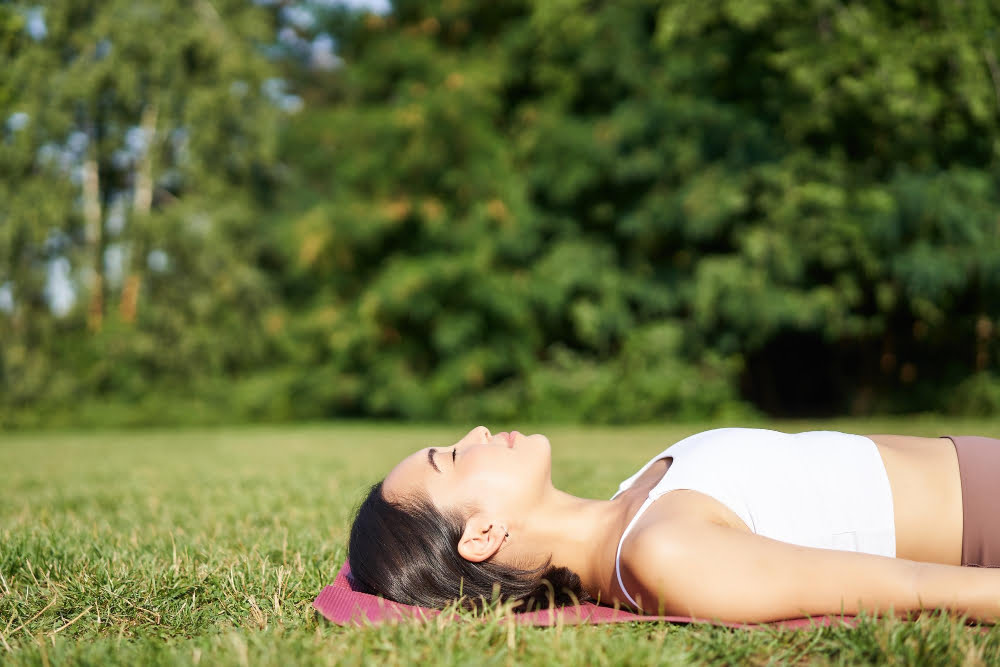
Supine meditation entails a posture where the meditator lies flat on their back, often with arms resting at the side and palms facing upwards. This position is known to help facilitate relaxation and tension release in the body.
1. Quieting the Mind: The supine posture allows the body to fully rest and support the weight, creating a space of tranquility for the mind. This helps to simmer down persistent thoughts and foster a sense of calmness.
2. Body Awareness: Lying down allows each individual to better perceive bodily sensations or areas of discomfort, making it an ideal way to cultivate mindfulness about physical wellbeing.
3. Deep Relaxation: This position encourages complete surrender to gravity leading to profound relaxation.
4. Ease for Certain Individuals: This position might be ideal for people with certain physical challenges, lower back issues or during pregnancy where sitting for long periods may not be comfortable.
However, it is crucial to maintain alertness during meditation in this position to avoid drifting into sleep. Using certain techniques like controlled breathing or body scan methods can aid in keeping the mind active and alert.
The Importance of Comfort and Alignment in Supine Meditation
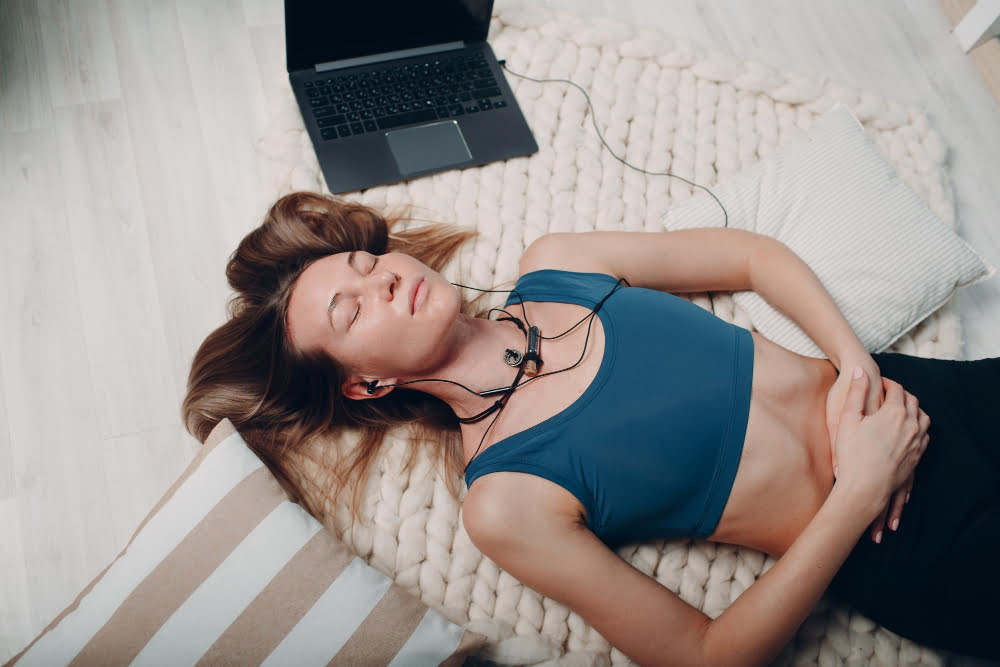
When choosing a supine position for meditation, maintaining comfort and alignment stands central. Above all, your body should feel at ease to promote focus and relaxation.
1. Aligning the Body: Position your body symmetrically. Center your head in line with your body, not tilted to one side. Let your arms rest gently by your sides, palms facing up. Ensure your legs are slightly apart and relaxed.
2. Optimal Comfort: Use props such as a small pillow under your head or a bolster under your knees if necessary. These can alleviate strain in the neck or lower back, enhancing total relaxation.
3. Staying Warm: Body temperature often decreases during meditation. Consider covering yourself with a light blanket to stay warm and cozy throughout your session.
4. Managing Disturbances: Choose a quiet, disturbance-free place, shut off electronics, and inform others not to interrupt your meditation time.
Remember that there’s no ‘one-size-fits-all’ in meditation. Adapt and adjust the practice to your personal needs for the most beneficial experience.
Practical Guide: How to Meditate Lying Down
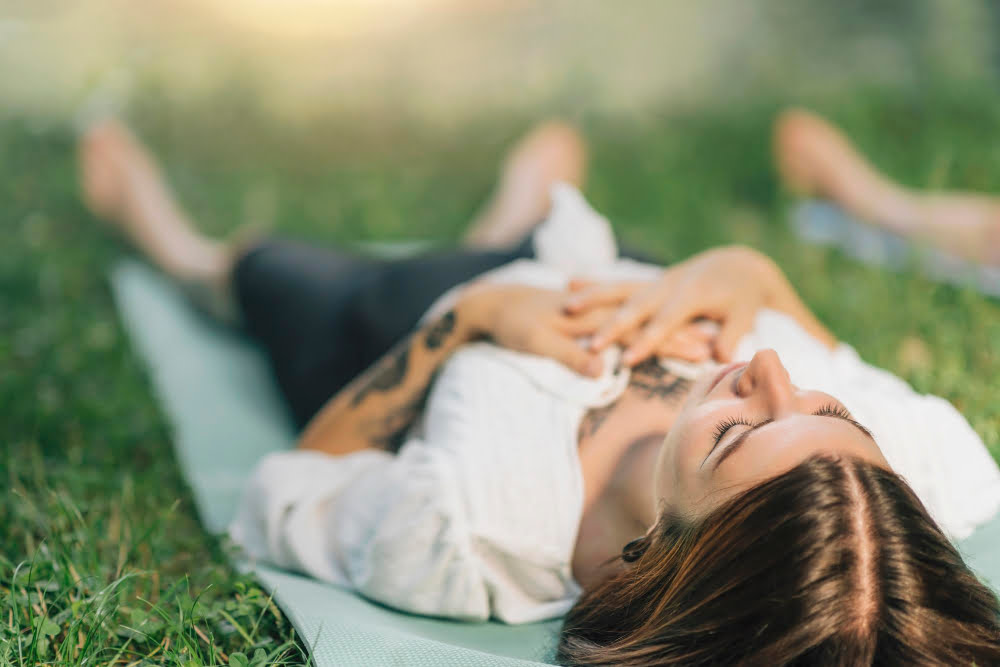
Begin by finding a flat surface to lie on. An ideal option would be a yoga mat, but a comfortable bed or a carpeted floor would suffice too. Ensure you’re in comfortable clothing which does not restrict your movement.
Next, position yourself correctly. Your body should be straight, your legs slightly apart, and your arms placed gently on the sides of your body. Your palms should face upwards, promoting open energy channels.
Your head position is crucial; the neck should not arch excessively. Consider supporting your neck with a thin pillow if needed.
To focus your mind, close your eyes gently. Visualize a peaceful place or focus on the rhythm of your breath as it moves in and out.
Ensure your tongue is relaxed, resting on the roof of the mouth. This positioning promotes overall relaxation of the face muscles and aids in deeper, more relaxed breathing.
Utilize a gentle diaphragmatic breathing technique. Breathe in slowly and deeply through the nose, feel your belly rise with the breath inward, and fall gently as you breathe out.
Remember to not force your breath. Allow it to flow naturally, harmonizing with your mind and body. If thoughts come, observe them, and let them flow away just as easily, bringing your attention back to your breath.
Finally, practice consistency. Like any other form of meditation, lying down meditation becomes easier and more effective with time. Practice routinely and make this a part of your daily schedule to reap maximum benefits.
Understanding Inclined Savasana and Semi-Supine Positions in Meditation
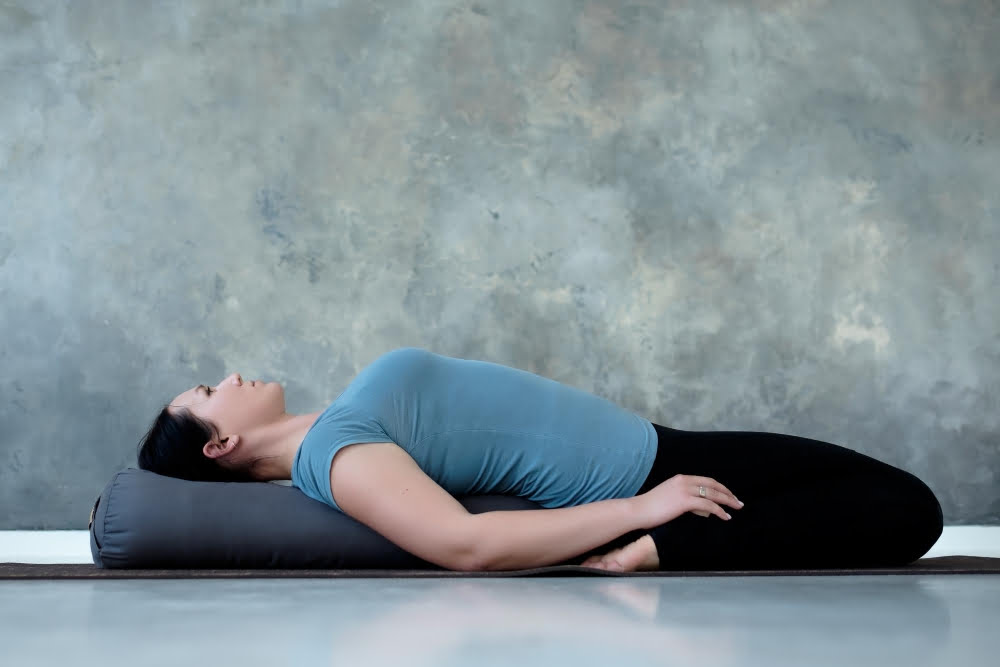
Inclined Savasana, also known as Reclined Hero pose, is a practiced position that involves placing a bolster or folded blanket under the spine and head. This creates a gentle incline, providing both physical support and an open position for the chest, encouraging undisturbed, free-flowing breathing. With the heart slightly above the head, this position facilitates a state of relaxation and quiet mindfulness.
The Semi-Supine position is another esteemed method for laying meditation. With bent knees and feet flat on the floor, a person lies back on the floor or mat, often with a small pillow supporting the head. This position, commonly used in Alexander Technique, can reduce back strain while promoting natural alignment, improved circulation, and easier breathing.
Both these positions aid in reducing distraction from physical discomfort while helping to maintain necessary alertness — a beautiful balance of relaxation and wakefulness. They embody the practical application of meditation principles, even before the mind’s journey into mindfulness begins.
The Role of Body Scan and Diaphragmatic Breathing in Lying Down Meditation
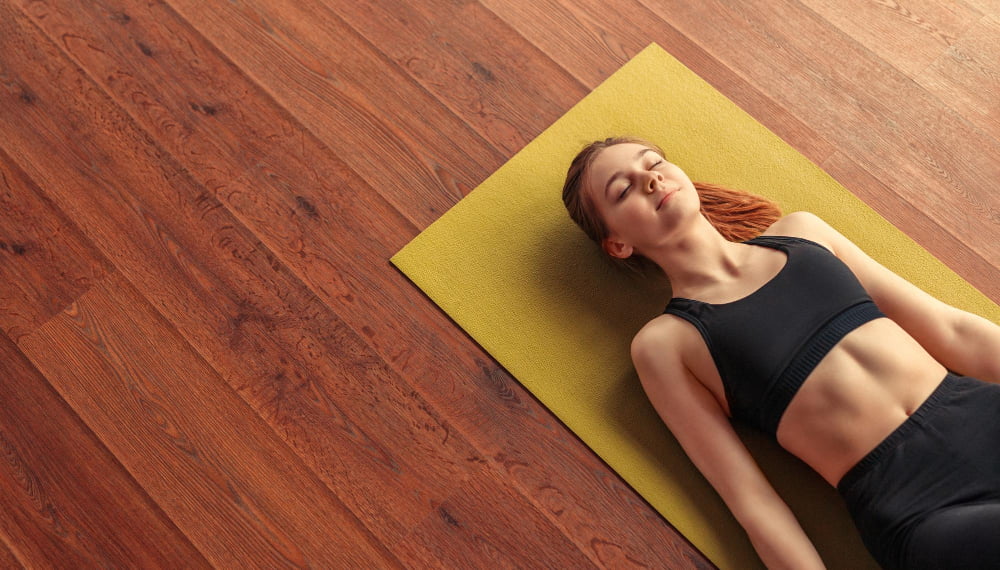
In body scan meditation, you mentally traverse your body, observing each part with non-judgmental mindfulness. This could range from your toes to your head, helping you develop a greater awareness of your physical presence and whereabouts. Doing this lying down optimizes comfort, promoting deeper and more focused mindfulness.
Diaphragmatic breathing, on the other hand, engages the diaphragm, allowing fuller, slower breaths. This method of breathing reduces stress, boosts oxygen levels, and augments mindfulness. As you lie down, place one hand on your chest, the other on your stomach. As you slowly inhale, feel your stomach rise under the lower hand, while the upper hand remains fairly still.
Here are few points to shed light on these practices:
- Body scan cultivates mindfulness: It’s about connecting body and mind, creating harmony between the physical and mental self.
- Body scan helps release tension: As you mentally scan each body part, you might find tension unnoticed before. Recognizing this helps facilitate intentional relaxation.
- Diaphragmatic breathing provides physical benefits: More oxygen enters your body, your heart rate slows, blood pressure drops, muscles relax, aiding in overall stress reduction.
- Diaphragmatic breathing enhances mindfulness: The intentional focus on your breath can anchor your mind from wandering thoughts, facilitating a more profound meditation experience.
Remember, these exercises, though simple, are powerful. They encourage a more mindful, relaxed state, carving the path towards deeper meditation experiences.
Exploring Sleep Meditation and Sound Healing Techniques in Lying Down Position
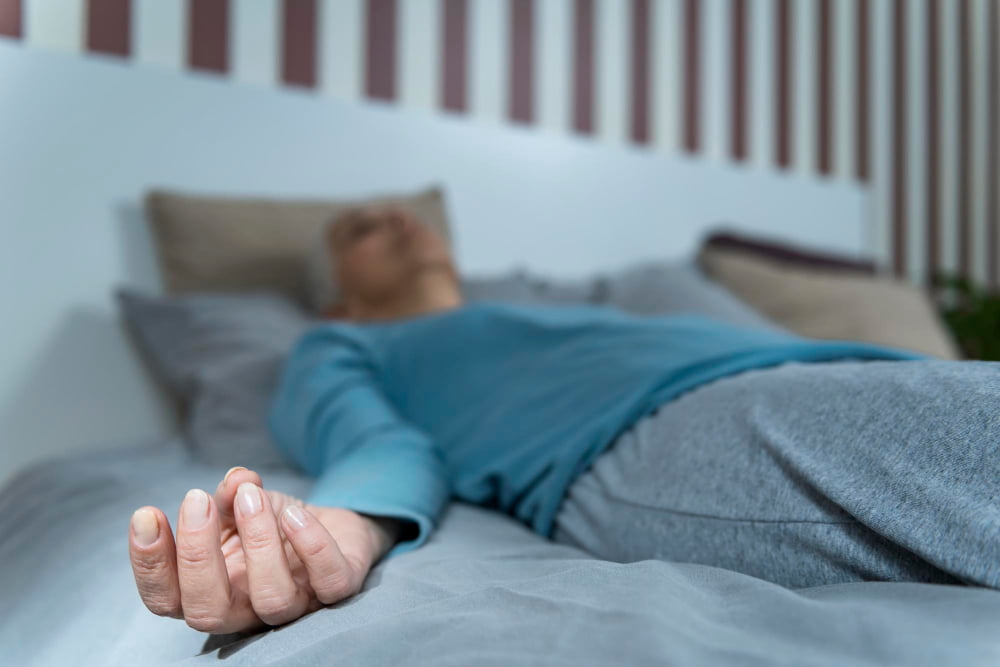
Sleep meditation, often performed in a lying down position, aims to guide the mind and body towards deep relaxation, thus promoting healthy, restful sleep. It’s a mindful exercise engaging all senses, inducing tranquility and rest. Incorporating sound healing techniques can enhance this experience, creating a soothing, immersive environment for profound peace and relaxation.
1. Progressive Muscle Relaxation: Start by consciously tensing and relaxing each muscle group, beginning from the toes and gradually progressing to the top of your head. This technique fosters body awareness and releases physical tension, preparing the body for sleep.
2. Guided Imagery Meditation: Utilizing your mind’s visualizing power, imagine serene, peaceful environments such as a calm lake or a forest at dawn. This distracts the mind from intrusive thoughts and encourages mental relaxation.
3. Sound Healing Techniques: The utilization of various sound frequencies can aid in reaching deeper levels of consciousness. Typically, sounds of nature, soft instrumental music, or specially designed sound healing frequencies are used. They reharmonize cells that are in disharmony, disrupt reductive thought patterns and enhance relaxation response.
4. Deep Breathing: Mindful, rhythmic breathing slows your heart rate and relieves anxiety, creating optimum conditions for sleep.
Remember, the lying down position for these techniques should be comfortable and supportive, with the head and neck aligned with the spine. The ultimate aim is to create a relaxing, soothing atmosphere to drift into peaceful slumber.
The Relationship Between Sleeping Postures and Lying Down Meditation
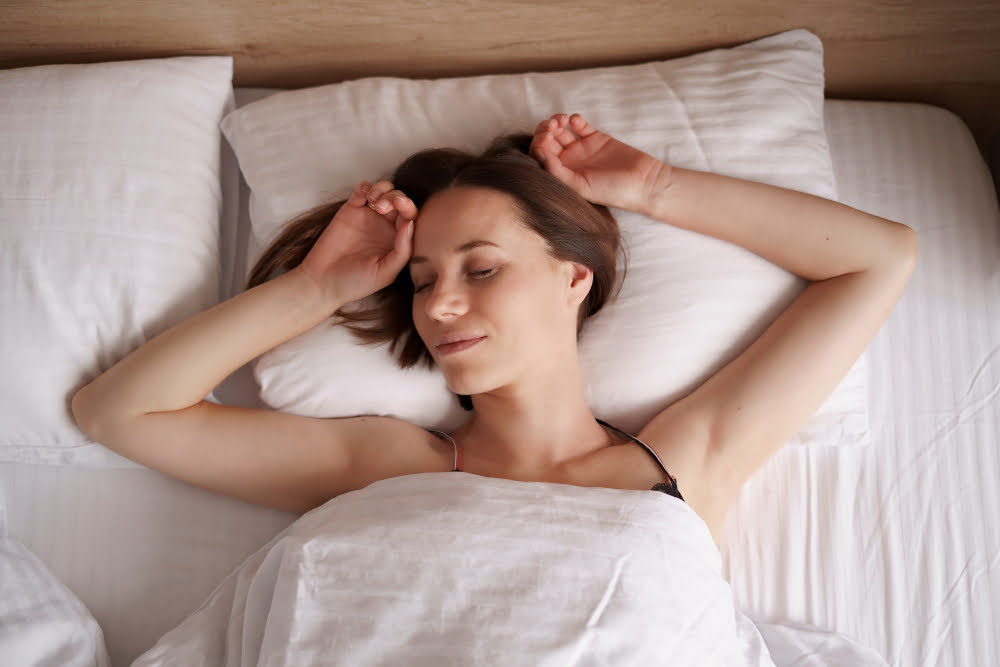
Before you initialize your lying down meditation, it’s crucial to grasp the significance of sleeping postures to augment the effectiveness of the session. Your body has to be aligned properly, which optimally nurtures both your physical and mental well-being.
Here are a few key points to keep in mind:
- 1. Try to lie on your back, which ideally encourages natural alignment of your spine. This posture can provide a balanced foundation allowing energy to flow with ease during the meditation.
- 2. Keep your legs slightly apart, hands by your sides with palms facing upward. This open posture helps in creating a mind-body connection and brings robust grounding.
- 3. Use a thin pillow or cushion under your head, not too high or low, to maintain the natural curvature of your neck, reducing any strain or tension.
- 4. Employ the use of devices like eye pillows or blankets, if necessary. They can provide additional comfort and facilitate deeper relaxation.
- 5. Remember that your body may shift or adjust during the duration of your meditation, especially if it’s dealing with discomfort. Permit flexibility, it’s a part of the process.
Finally, sleeping postures ought to be viewed as a platform, ensuring an optimal meditative state. But always listen to your body, it knows what it feels best in. Your comfort reigns paramount.
FAQ
Is meditation effective while lying down?
Yes, meditation can be effective while lying down as it facilitates deeper relaxation and a unique focus, making it suitable for certain types of meditation practices.
Is it possible to meditate lying in bed?
Yes, meditating while lying down is indeed possible and can be especially fruitful for practices like body scans and diaphragmatic breathing.
Does the position you meditate in matter?
Yes, the position you meditate in does matter because it sets the intention for the practice, signaling to your mind and body that it’s time to meditate and aiding you in achieving a meditative state faster over time.
Is it OK to doze off during meditation?
Yes, it is absolutely fine to doze off during meditation as your body might require rest at that time.
How does the body posture affect the quality of the meditation?
Body posture impacts meditation quality by influencing focus and energy levels; for instance, a relaxed yet upright posture promotes alertness, deeper breathing, and a clear, focused mind.
Can you get the same benefits from supine meditation as sitting?
Yes, supine meditation, when performed correctly, can provide the same benefits as sitting meditation.
Is there a specific technique for lying down meditation?
Yes, in the lying down meditation technique, one lays flat on their back on a comfortable surface, relaxes every muscle, focuses on the breath, and observes the mind without judgment.